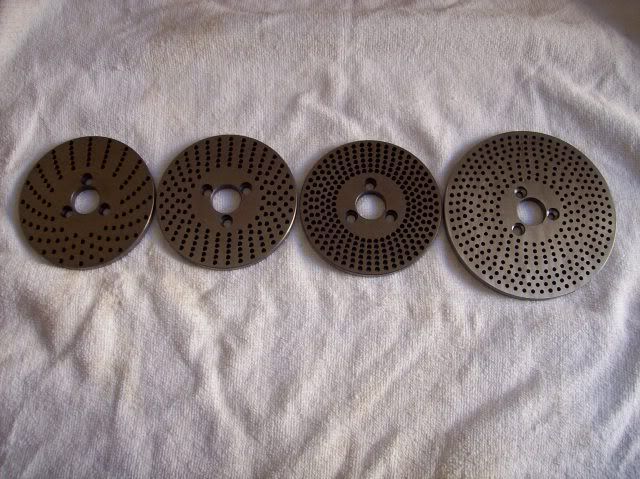Maryak
Well-Known Member
- Joined
- Sep 12, 2008
- Messages
- 4,990
- Reaction score
- 77
Hi Guys,
Some time ago I purchased a 6" Vertrex Rotary Table with the indexing attachment.
When it came and I had studied the indexing range it seemed there were considerable gaps in the divisions available.

I can't remember why but I needed to make some odd divisions not in the range including a 127 tooth gear for a metric lathe, (this one I remember why).

First up I added a 4th plate to the existing 3 plates. Which I named plate D. To make plate D I needed to use compound indexing on the existing plates, (A,B,C). Plate D was also the maximum diameter plate that the indexing arm would accommodate.

First discovery was that it is possible to fudge a compound index using a rotary table.

The attached Excel spreadsheet shows how.
Here is a picture of the as supplied plates on the left and the additional plate on the right.

For those of us with CAD an easier way as described in MEW is to make a cardboard plate of the required divisions using radial array and glue this over an existing metal plate.
I found this out only after I'd done all of the above.

For others, this may get you out of; or into the correct hole.

Best Regards
Bob
View attachment IndexRT.xls
Some time ago I purchased a 6" Vertrex Rotary Table with the indexing attachment.
When it came and I had studied the indexing range it seemed there were considerable gaps in the divisions available.

I can't remember why but I needed to make some odd divisions not in the range including a 127 tooth gear for a metric lathe, (this one I remember why).

First up I added a 4th plate to the existing 3 plates. Which I named plate D. To make plate D I needed to use compound indexing on the existing plates, (A,B,C). Plate D was also the maximum diameter plate that the indexing arm would accommodate.

First discovery was that it is possible to fudge a compound index using a rotary table.

The attached Excel spreadsheet shows how.
Here is a picture of the as supplied plates on the left and the additional plate on the right.

For those of us with CAD an easier way as described in MEW is to make a cardboard plate of the required divisions using radial array and glue this over an existing metal plate.
I found this out only after I'd done all of the above.

For others, this may get you out of; or into the correct hole.

Best Regards
Bob
View attachment IndexRT.xls




